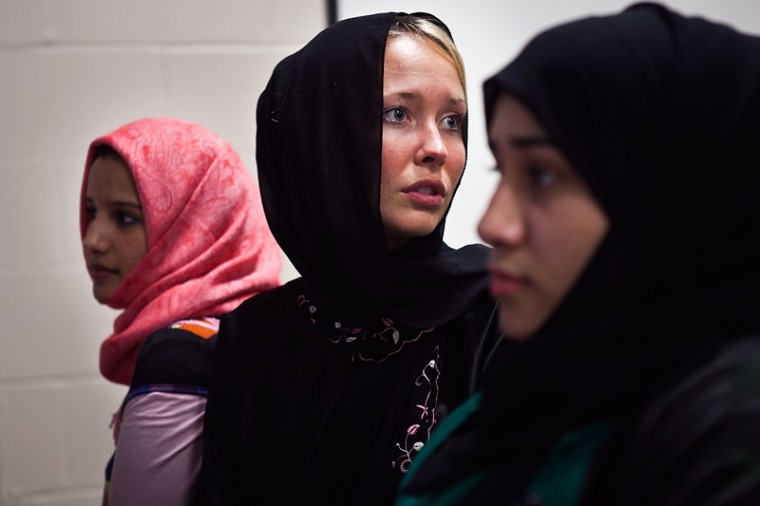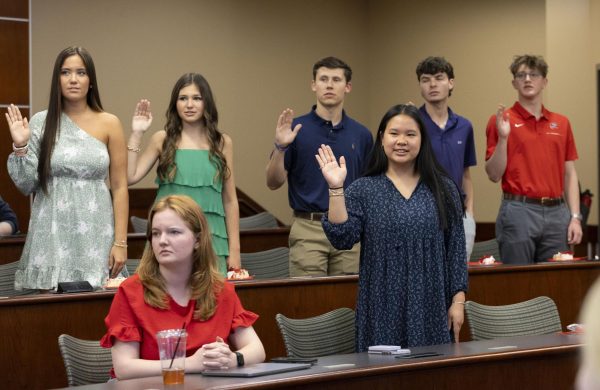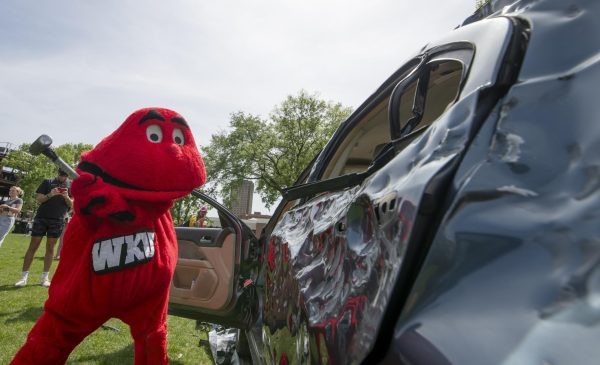American, Saudi Arabian women exchange cultures
September 16, 2011
She wore an Army-green scarf with silver thread wrapped tightly around her head, her hair completely covered.
She was dressed in a loose-fitting navy blue sweater, jeans and brown boots — an outfit that covered most of her body.
What sets this woman, graduate student Lindsey Ardrey, apart from Muslim women at WKU is that she’s not actually Muslim.
“I don’t think (the hijab) hindered me,” Ardrey said. “It hindered my thoughts. No one was really staring at me, no one really cared. It was more my own perception.”
Ardrey was one of several female American students who wanted to experience what it was like to wear a hijab — a traditional Muslim headscarf — and be completely covered for a day.
This was part of the American and Saudi Arabian exchange, where women from both cultures came together Monday night at the Institute for Citizenship and Social Responsibility in Garrett Conference Center. They discussed topics such as what it’s like to be a Muslim woman, women’s rights, marriage, cultural stereotypes and more.
The women and some additional guests, including males, returned to Garrett on Thursday afternoon to talk about their experience wearing the hijab, as well as to discuss other cultural topics regarding Muslim women’s apparel and cultural norms in participants’ native countries.
“I left my office at 8:30 p.m., and I was walking solo,” Ardrey said. “I thought, ‘Outside of me being a woman walking alone outside, will I be in any more danger because I’m wearing this?’”
Another student who took part in the experience was Bowling Green senior Jennifer McCoy, who said while wearing the hijab throughout the day, she was reminded that she was different.
“I felt a lot of people were looking at me,” McCoy said. “But I don’t know if it was because I’m this really pale white girl wearing a hijab or if they were looking at me because they thought I was Muslim.”
Saundra Ardrey, political science department head and co-director of the ICSR, came up with the idea of American students wearing the hijab for a day in order to “walk a mile in their shoes.”
Several years ago, Ardrey said she traveled to Egypt and was intrigued by the culture, the food and by the way the women dressed and behaved. An Egyptian friend suggested Ardrey wear the full veil, which consists of being completely covered with only the eyes showing.
“I have to say it was a different experience for me, and I was convinced that I wanted other women to share that experience, because sometimes we are critical of things we don’t understand,” Ardrey said. “Come and walk a mile in my shoes so that you can have a different perspective, or even if you don’t have a different perspective, at least you’ve experienced a different culture.”
Some of the Saudi women, such as Dima Badghaish, business manager at the English as a Second Language Institute, said it’s important for people to understand that Muslim women wear the hijab for religious reasons. It’s a way to show appreciation for God and respect yourself and your body, she said.
“The only males who get to see (without hijab on) is your immediate family, your father, your sibling and your uncle and of course your husband,” Badghaish said. “The idea of wearing the hijab is to show modesty and not flash your body. You don’t show your goods — you’re all covered up.”






















![Students cheer for Senator at Large Jaden Marshall after being announced as the Intercultural Student Engagement Center Senator for the 24th Senate on Wednesday, April 17 in the Senate Chamber in DSU. Ive done everything in my power, Ive said it 100 times, to be for the students, Marshall said. So, not only to win, but to hear that reaction for me by the other students is just something that shows people actually care about me [and] really support me.](https://wkuherald.com/wp-content/uploads/2024/04/jadenmarshall-600x422.jpg)

